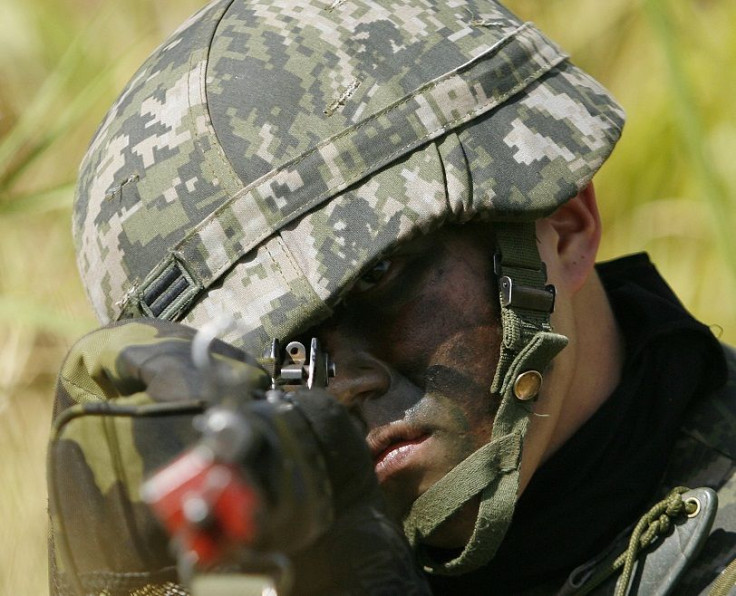Objectifying, Not Dehumanizing The Enemy In War May Help Troops Return To Healthier Civilian Lives, Prevent War Crimes

History has been marred with unforgettable genocide and war crimes. Among the most memorable acts of crime were the Holocaust that killed more than four million Jews in Europe and then there were the crimes during the Kosovo war and the killings in Rwanda — the list goes on.
For years, combat troops have been trained to dehumanize the enemy to kill. Now researchers are saying indifference toward enemies or imagining them as objects could prevent unwarranted war crimes and help troops lead healthier lives back home.
The study used brain imaging techniques to find that objectifying the enemy is less damaging to troop health, compared to dehumanizing the enemy in war as a disgusting animal. The researchers added that the dehumanizing form of thinking is closely associated with mental illnesses, from depression to schizophrenia.
"Whether a person objectifies another or views another as a subhuman animal, he suspends his moral concern for that other person," said Anthony Jack, lead author of the study and assistant professor of cognitive science at Case Western Reserve, in a news release.
"We should train our troops to objectify the enemy for the purposes of combat," said Shannon French, associate professor of philosophy at Case and a military ethics specialist, in the press statement. "Because we believe this is the only mode that frees their cognitive resources to deal with the strategic and performance demands of intense combat situations."
The researchers recruited 47 healthy individuals with no prior neurological history between the ages of 19 and 59 and showed them narrated photos that induced certain emotions, as their brain activities were recorded using functional magnetic resonance imaging (fMRI). One set of pictures was dehumanizing (animalistic) while other photos were objectifying (mechanistic).
Anamalistic dehumanization produced high activities in social and analytic reasoning, meaning it could make subjects act with disgust, and objectification deactivated the reasoning but kept analytical reasoning to perform their activities with indifference.
The researchers found that the participants felt the worst when they saw images that induced anamalistic dehumanization, compared to mechanistic humanization that made them feel the best.
The images revealed that dehumanization could actually use up mental resources while objectification frees up resources. However, the team added that although it frees up their cognitive resources for troops to perform their duties, there needs to be a way to balance the psychological urge to dehumanize.
"One way we can do that is by training troops to think analytically in response to specific threats, so they objectify in response to a circumstance rather than a person," Jack said.
"Another way to limit dehumanizing of the people involved in a conflict is to increase discipline around the issue and also improve cultural understanding," French said. "That is also useful for other strategic purposes, such as peacekeeping and rebuilding."
Researchers said that a deeper investigation needs to be done, although the findings indicate a psychological test is on the horizon to determine whether a combat troop is ready for battles.
"Before we ask them to fight for us in battle," Jack said, "we need to be sure our troops are ready to switch between the two major networks in the brain just as you and I can do in our much gentler civilian lives."
Source: Jack AL, Dawson AJ, Norr M. Seeing human: distinct and overlapping neural signatures associated with two forms of dehumanization. NeuroImage. 2013.



























